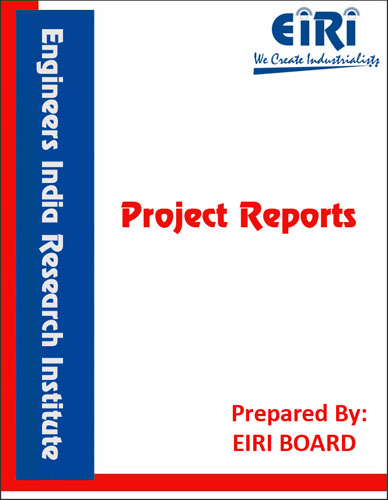AUTOMATIC DETERGENT POWDER MANUFACTURING (NOT CAKE)
The project report includes Present Market Position and Expected Future Demand, Market Size, Statistics, Trends, SWOT Analysis and Forecasts. Report provides a comprehensive analysis from industry covering detailed reporting and evaluates the position of the industry by providing insights to the SWOT analysis of the industry.
We can prepare PROJECT REPORT as per your INVESTMENT PLAN for BANK LOAN REQUIREMENT and INDUSTRY ANALYSIS. All reports are prepared by highly qualified consultants and verified by a panel of experts.
Have Query? Click Here to Chat
Industry Expert is Online, Chat with him for more detail.

Synthetic detergents occupy a vital place in the present age particularly when the modern society is constantly looking for quick, effective and economic cleaning agents. Synthetic detergents emerged as a regular industry after second world war only. The development of this industry is closely linked with Petro-chemical industry which forms the basic for its raw materials.
Detergents when dissolved in water, acquire better cleaning properties and hence facilitates easy removal of dirt & dust and grease etc.
Apart from their use in clothes washing, detergents also have applications in the following industries.
1. In industry, in laundry and dry cleaning.
2. In textile processing, grain milling, metal plating and foods canning.
3. In dairy foods and beverages processing and in restaurants.
4. In plant maintenance and industrial house-keeping.
The principal types of synthetic detergents are an ionic, non-ionic and employtics. Sodium dodecyle benzene sulphonate is an example of the ionic type while nylon phenol, nylone oxide obtained from ethylene oxide is the non-ionic type. The amploytic detergents like the alkyl amino propionates behave as cations in acidic solutions and like anions in alkaline solution.
Among the numerous detergent powders are available today in the market e.g. Hipoline, T.Series, Areal, Rin, Ghari, Surf, Sunlight, Nirma, Wheel detergent powder is most popular.
The synthetic detergent industry is one of the largest chemical process industries. The most recent estimates indicate an annual U.S production of synthetic detergents of about 3 million tones with an approximate annual value of 2 billion. The industry differs from many other chemical process industries, however, in that the bulk of its production is sold directly to individuals for house hold consumption primarily as branded products, rather than to industrial or institutional users.
INTRODUCTION
PROPERTIES OF WASHING SOAP AND WASHING POWDER
USES AND APPLICATION
B.I.S. SPECIFICATIONS
RAW MATERIAL REQUIREMENT
MARKET SURVEY
PRESENT MANUFACTURERS/SUPPLIERS/EXPORTERS
OF DETERGENT POWDERS
MANUFACTURING PROCESS OF DETERGENT POWDER
(SPRAY DRYING METHOD)
STANDARD DETERGENT POWDER MANUFACTURING PLANT CONSISTS OF MIXING, DRYING AFTER
DRYING PACKAGING AND ANTIPOLLUTION UNITS.
MANUFACTURE OF DETERGENT POWDER
PROCESS OF MANUFACTURE OF WASHING DETERGENT POWDER
SURF EXCEL TYPE DETERGENT POWDER
PROCESS OF MANUFACTURE OF WASHING DETERGENT POWDER
(WHEEL TYPE)
HIGHER GRADE/QUALITY ARIEL TYPE DETERGENT POWDER
FORMULATION OF DETERGENT POWDER
FORMULATION OF DETERGENT POWDER, SURF EXCEL TYPE
FORMULATION OF DETERGENT POWDER, WHEEL TYPE
OTHERS FORMULATION AND PROCESS OF GOOD QUALITY
DETERGENT POWDER
RAW MATERIALS
METHODS FOR PERFORMANCE TESTS FOR SURFACE ACTIVE AGENTS 57
SURF EXCEL TYPE DETERGENT POWDER
PLANT LAYOUT
SUPPLIERS OF RAW MATERIALS
SUPPLIERS OF PLANT AND MACHINERY
APPENDIX – A:
1. COST OF PLANT ECONOMICS
2. LAND & BUILDING
3. PLANT AND MACHINERY
4. FIXED CAPITAL INVESTMENT
5. RAW MATERIAL
6. SALARY AND WAGES
7. UTILITIES AND OVERHEADS
8. TOTAL WORKING CAPITAL
9. COST OF PRODUCTION
10. PROFITABILITY ANALYSIS
11. BREAK EVEN POINT
12. RESOURCES OF FINANCE
13. INTEREST CHART
14. DEPRECIATION CHART
15. CASH FLOW STATEMENT
16. PROJECTED BALANCE SHEET



